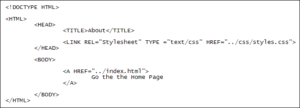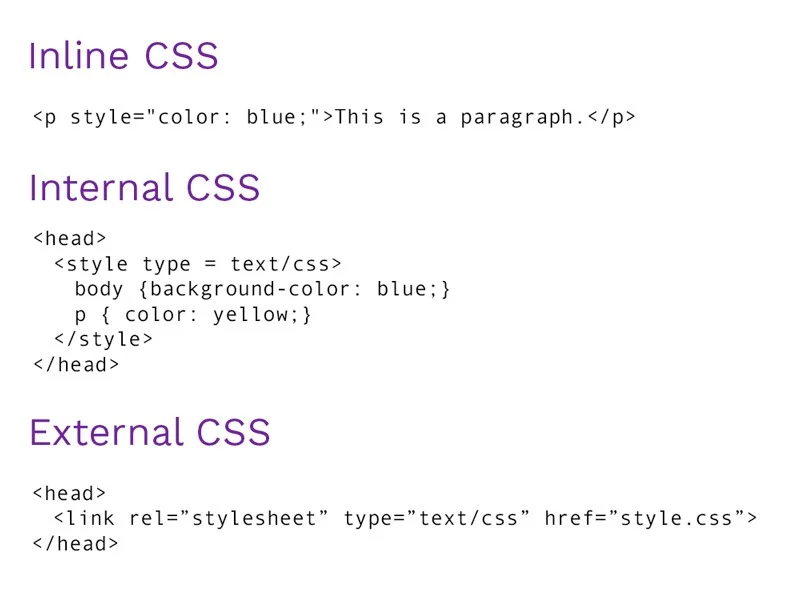In the realm of web design, the presentation of content is just as crucial as the content itself. One of the foundational elements of crafting visually appealing and consistently styled websites is the practice of linking external stylesheets. Therefore, this method not only streamlines the organization of your style code but also allows for enhanced maintainability and a more efficient design process.

Understanding External Stylesheets
To begin with, in the world of HTML and CSS, stylesheets define the visual presentation of a website. While developers can embed internal styles directly within HTML files, they choose external stylesheets for a separate file dedicated solely to styling. This external file allows them to link it to multiple HTML documents, ensuring a consistent design across various pages of a website.
Syntax for Linking External Stylesheets
The process of linking external stylesheets involves utilizing the <link> HTML element within the <head> section of your HTML document. The rel attribute is set to “stylesheet,” indicating that the linked file is a stylesheet, while the href attribute specifies the path to the external stylesheet file. Optionally, the type attribute can be included, though in modern web development, it’s often omitted as browsers can infer the type based on the file extension.
<link rel="stylesheet" type="text/css" href="styles.css">
This concise line of code establishes a connection between your HTML file and the external stylesheet, ensuring it applies the styling rules defined in the stylesheet to the HTML content.
Organizing and Structuring Stylesheets
With external stylesheets, the importance of clear organization and structure becomes evident. A well-structured stylesheet enhances readability, simplifies debugging, and fosters collaboration within larger development teams. Consider grouping styles based on elements, classes, or IDs and organizing them in a logical sequence. Commenting within the stylesheet further clarifies the purpose of different sections, contributing to a more comprehensible and maintainable codebase.
Responsive Design with External Stylesheets
Linking external stylesheets is pivotal in implementing responsive design—ensuring your website adapts seamlessly to various devices and screen sizes. Media queries, employed within external stylesheets, enable you to define specific styles based on characteristics such as screen width, height, and device orientation. This approach facilitates a more user-friendly experience, catering to the diverse array of devices accessing your web content.
Browser Caching and Performance Benefits
External stylesheets leverage browser caching, a mechanism that stores previously loaded resources on the user’s device. After loading the stylesheet, the browser expedites subsequent visits to other pages that use the same stylesheet by retrieving the cached version instead of reloading the entire file. This not only enhances performance but also reduces the overall load time for subsequent page views.
Linking Multiple Stylesheets
For larger projects or those requiring specific styles for different sections, linking multiple external stylesheets becomes essential. This can be achieved by including multiple <link> elements in the HTML file, each pointing to a distinct stylesheet. The order of these links determines the cascading nature of styles, with later styles potentially overriding earlier ones. This hierarchy allows for a systematic approach to managing various aspects of styling.
<link rel="stylesheet" href="reset.css">
<link rel="stylesheet" href="main.css">
<link rel="stylesheet" href="responsive.css">
Common Pitfalls and Best Practices
While linking external stylesheets offers numerous benefits, there are common pitfalls to be aware of. Issues such as incorrect file paths, outdated links, or excessive HTTP requests can impact the proper loading of stylesheets. To mitigate these challenges, adopting best practices such as using relative paths, version control for stylesheets, and employing Content Delivery Networks (CDNs) for popular libraries can streamline the process.
Conclusion
In the intricate dance of web development, linking external stylesheets emerges as a choreographer. Therefore orchestrating the visual symphony of a website. By embracing this practice, designers and developers unlock a realm of possibilities. Hence ensuring not only a harmonious and consistent design but also a streamlined and efficient development process. As you embark on your web design journey, remember that the mastery of linking external stylesheets is the key to creating captivating and polished online experiences.

